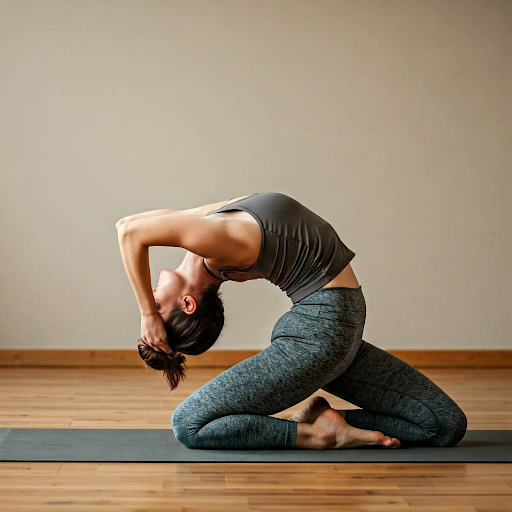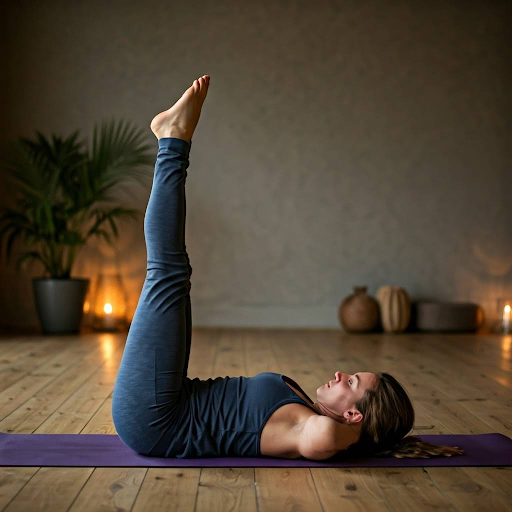- Get link
- X
- Other Apps
Featured Post
- Get link
- X
- Other Apps
**Best Yoga Poses for Flexibility and Relaxation**
In today’s fast-paced world, finding time to unwind and care for your body can feel like a luxury.
But what if I told you that just a few minutes of yoga each day could help you release tension, improve flexibility, and restore inner peace?
Whether you’re a beginner or an experienced yogi, incorporating the right poses into your routine can make a world of difference.
In this blog, we’ll explore the *best yoga poses for flexibility and relaxation*—perfect for anyone looking to stretch, breathe, and recharge.
---
**Why Yoga Works for Flexibility and Relaxation**
Before diving into the poses, let’s talk about why yoga is so effective. Yoga combines mindful movement with deep breathing, which helps relax both the body and mind. The stretches target tight muscles, while the focus on slow, intentional movements calms your nervous system. Over time, regular practice can:
- **Improve flexibility** by loosening stiff muscles and joints.
- **Reduce stress** by promoting mindfulness and relaxation.
- **Boost circulation**, leaving you feeling energized yet calm.
Now, let’s get into the poses!
---
**1. Child’s Pose (Balasana)**
**Benefits:** Relieves lower back tension, calms the mind, and gently stretches the hips and thighs.
Child’s Pose is one of the most restorative yoga poses, making it perfect for relaxation. To perform this pose:
1. Kneel on your mat and sit back on your heels.
2. Fold forward, extending your arms in front of you.
3. Rest your forehead on the mat and breathe deeply.
This pose is especially helpful when you’re feeling overwhelmed or need a moment to reset during a busy day.
---
### **2. Downward Dog (Adho Mukha Svanasana)**
**Benefits:** Stretches the hamstrings, calves, and shoulders; improves posture and energy levels.
Downward Dog is a classic pose that works wonders for flexibility. Here’s how to do it:
1. Start on all fours, aligning your wrists under your shoulders and knees under your hips.
2. Tuck your toes under and lift your hips toward the ceiling, forming an inverted V shape.
3. Press firmly into your hands and feet, lengthening your spine as you breathe.
If your heels don’t touch the ground, keep your knees slightly bent—it’s not about perfection but progress.
---
**3. Cobra Pose (Bhujangasana)**
**Benefits:** Strengthens the spine, opens the chest, and relieves stress.
Cobra Pose is excellent for stretching the front of your body and improving posture. Follow these steps:
1. Lie face down on your mat with your hands placed under your shoulders.
2. Press into your palms and slowly lift your chest off the ground, keeping your elbows slightly bent.
3. Engage your core and hold the position while breathing steadily.
This gentle backbend also stimulates abdominal organs, aiding digestion and overall well-being.
---
**4. Seated Forward Fold (Paschimottanasana)**
**Benefits:** Stretches the hamstrings, spine, and lower back; promotes relaxation.
Seated Forward Fold is ideal for increasing flexibility in your legs and back. Here’s how to practice it:
1. Sit tall with your legs extended straight in front of you.
2. Hinge at your hips and fold forward, reaching for your toes or shins.
3. Keep your spine long and avoid rounding your back too much.
Remember, this pose isn’t about how far you go—it’s about feeling the stretch and letting gravity assist you.
---
**5. Legs-Up-The-Wall Pose (Viparita Karani)**
**Benefits:** Improves circulation, reduces swelling, and deeply relaxes the nervous system.
Legs-Up-The-Wall Pose is a restorative pose that feels incredibly soothing after a long day. Here’s how to set it up:
1. Find a wall and lie down near it.
2. Swing your legs up the wall and adjust your position so your hips are close to the base.
3. Extend your arms out to the sides and relax completely.
This pose is often referred to as a “mini vacation” because it allows your body to fully unwind and rejuvenate.
---
**Tips for Practicing Yoga Safely**
While these poses are beginner-friendly, it’s important to approach them mindfully. Here are a few tips to ensure a safe and enjoyable practice:
1. **Listen to Your Body:** Avoid pushing yourself too hard. If something feels uncomfortable or painful, ease off or modify the pose.
2. **Focus on Your Breath:** Deep, steady breathing enhances relaxation and helps deepen your stretches.
3. **Be Consistent:** Even 5-10 minutes of yoga daily can lead to significant improvements over time.
---
**How to Incorporate These Poses Into Your Routine**
Creating a simple yoga sequence can make your practice more structured and effective. For example:
- Start with **Child’s Pose** to center yourself.
- Move into **Downward Dog** and **Cobra Pose** to warm up your body.
- Transition to **Seated Forward Fold** for deeper stretches.
- End with **Legs-Up-The-Wall Pose** for ultimate relaxation.
You can also pair these poses with meditation or journaling for a holistic self-care session.
---
**Final Thoughts**
Yoga is more than just physical exercise—it’s a way to connect with your body, quiet your mind, and cultivate inner peace. By incorporating these five poses into your routine, you’ll notice improvements in both flexibility and relaxation. And remember, yoga is a journey, not a destination. Celebrate small victories along the way, whether it’s touching your toes for the first time or simply taking a moment to breathe deeply.
Ready to roll out your mat? Share your favorite yoga pose in the comments below, and don’t forget to subscribe to our newsletter for more wellness tips and inspiration. Until next time, namaste! 🌿✨

































Comments